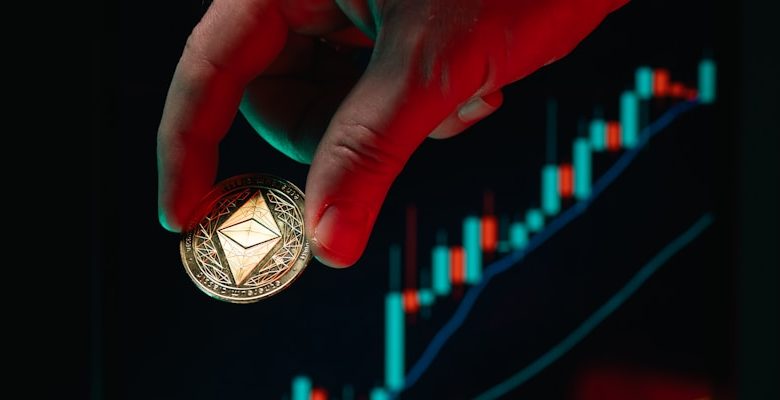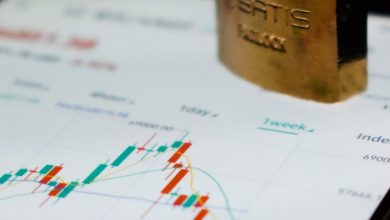The Influence of Economic Indicators on Crypto Market Performance

- Understanding the Relationship Between Economic Indicators and Cryptocurrency Prices
- Analyzing the Impact of GDP, Interest Rates, and Inflation on Crypto Market Trends
- How Unemployment Rates and Consumer Confidence Affect the Volatility of Cryptocurrencies
- Exploring the Role of Stock Market Performance in Shaping the Crypto Market
- The Influence of Global Trade and Geopolitical Events on the Value of Digital Assets
- Predicting Future Crypto Market Trends Based on Macroeconomic Factors
Understanding the Relationship Between Economic Indicators and Cryptocurrency Prices
The relationship between economic indicators and cryptocurrency prices is a complex and multifaceted one. Various economic indicators can have a significant impact on the performance of the crypto market, influencing the prices of different cryptocurrencies. Understanding how these indicators interact with the crypto market is crucial for investors and traders looking to make informed decisions.
One key economic indicator that can affect cryptocurrency prices is inflation. When inflation rates are high, the value of fiat currencies tends to decrease, leading investors to seek alternative stores of value like cryptocurrencies. This increased demand can drive up the prices of cryptocurrencies, making them more attractive to investors.
Another important economic indicator to consider is interest rates. Central banks’ decisions to raise or lower interest rates can have a direct impact on the value of fiat currencies, which in turn can influence the prices of cryptocurrencies. Higher interest rates can make traditional investments more appealing, leading to a decrease in demand for cryptocurrencies and potentially lower prices.
Unemployment rates are also a crucial economic indicator to monitor in relation to cryptocurrency prices. High unemployment rates can signal economic instability, prompting investors to seek out alternative investments like cryptocurrencies. This increased demand can drive up prices, as investors look to hedge against economic uncertainty.
GDP growth is another economic indicator that can impact cryptocurrency prices. Strong GDP growth is usually seen as a positive sign for the economy, leading investors to feel more confident in traditional investments. However, if GDP growth is stagnant or negative, investors may turn to cryptocurrencies as a hedge against economic downturn, potentially driving up prices.
Overall, the relationship between economic indicators and cryptocurrency prices is a nuanced one that requires careful analysis and consideration. By staying informed about key economic indicators and their potential impact on the crypto market, investors can make more informed decisions and navigate the volatile world of cryptocurrencies more effectively.
Analyzing the Impact of GDP, Interest Rates, and Inflation on Crypto Market Trends
When analyzing the impact of Gross Domestic Product (GDP), interest rates, and inflation on crypto market trends, it is essential to consider how these economic indicators can influence the performance of digital assets. GDP is a key indicator of the overall economic health of a country, reflecting the total value of all goods and services produced within its borders. Changes in GDP growth rates can affect investor confidence and market sentiment, leading to fluctuations in cryptocurrency prices.
Interest rates set by central banks play a crucial role in shaping the cost of borrowing and lending money, impacting investment decisions and asset valuations. When interest rates are low, investors may seek higher returns in alternative assets like cryptocurrencies, driving up demand and prices. Conversely, rising interest rates can dampen enthusiasm for riskier investments, causing a shift in capital away from crypto markets.
Inflation, the rate at which the general level of prices for goods and services rises, can erode the purchasing power of fiat currencies and drive investors towards inflation-resistant assets like Bitcoin. Cryptocurrencies are often viewed as a hedge against inflation due to their limited supply and decentralized nature. As inflation rates climb, interest in digital assets as a store of value may increase, influencing market dynamics.
How Unemployment Rates and Consumer Confidence Affect the Volatility of Cryptocurrencies
Unemployment rates and consumer confidence are two key economic indicators that can significantly impact the volatility of cryptocurrencies. When unemployment rates are high, it often indicates a struggling economy with decreased consumer spending and investment. This can lead to a decrease in consumer confidence, causing individuals to be more hesitant to invest in volatile assets like cryptocurrencies.
On the other hand, when unemployment rates are low and consumer confidence is high, individuals are more likely to have disposable income to invest in various assets, including cryptocurrencies. This increased demand can drive up the prices of cryptocurrencies, leading to higher volatility in the market.
It is essential for investors in the cryptocurrency market to pay attention to these economic indicators as they can provide valuable insights into the potential future performance of cryptocurrencies. By understanding how unemployment rates and consumer confidence affect the market, investors can make more informed decisions about when to buy or sell their assets.
Exploring the Role of Stock Market Performance in Shaping the Crypto Market
The relationship between stock market performance and the crypto market is a complex and multifaceted one. Stock market performance can have a significant impact on shaping the direction of the crypto market, as investors often look to traditional financial markets for cues on where to allocate their funds. When the stock market is performing well, investors may feel more confident in taking on riskier assets such as cryptocurrencies. Conversely, during times of stock market volatility or decline, investors may be more inclined to move their investments into safer assets, leading to a potential decrease in demand for cryptocurrencies.
However, it is crucial to note that the relationship between stock market performance and the crypto market is not always straightforward. There are various factors at play that can influence how the two markets interact. For example, geopolitical events, regulatory developments, and macroeconomic indicators can all impact both the stock market and the crypto market simultaneously, leading to a more nuanced relationship between the two.
Overall, while stock market performance can play a role in shaping the crypto market, it is essential to consider a wide range of factors when analyzing how economic indicators influence crypto market performance. By taking a comprehensive approach to understanding these dynamics, investors can make more informed decisions about how to navigate the ever-changing landscape of the financial markets.
The Influence of Global Trade and Geopolitical Events on the Value of Digital Assets
The value of digital assets is significantly influenced by global trade and geopolitical events. Changes in trade agreements, tariffs, and political tensions can all have a direct impact on the performance of cryptocurrencies and other digital assets.
Global trade tensions, such as those between the United States and China, can cause fluctuations in the value of digital assets as investors react to the uncertainty and potential economic impact of these events. Geopolitical events, such as Brexit or conflicts in the Middle East, can also lead to market volatility as investors seek safe-haven assets like cryptocurrencies.
It is essential for investors in the crypto market to stay informed about global trade and geopolitical events to anticipate potential market movements and make informed decisions about their digital asset investments. By monitoring economic indicators and staying up to date on international developments, investors can better navigate the volatile landscape of the cryptocurrency market.
Overall, the influence of global trade and geopolitical events on the value of digital assets is undeniable. Investors must consider these factors when analyzing market trends and making investment decisions in the ever-changing world of cryptocurrencies.
Predicting Future Crypto Market Trends Based on Macroeconomic Factors
When trying to predict future trends in the crypto market, it is essential to take into account various macroeconomic factors that can influence the performance of digital assets. By analyzing these indicators, investors can gain valuable insights into the potential direction of the market.
One crucial macroeconomic factor to consider is the overall health of the global economy. Economic indicators such as GDP growth, employment rates, and inflation levels can provide valuable information about the strength of the economy and its potential impact on the crypto market. A robust economy is generally associated with increased investor confidence and higher demand for digital assets.
Another important factor to consider is the monetary policy of central banks. Central banks play a significant role in shaping economic conditions through interest rate decisions and quantitative easing programs. Changes in monetary policy can have a profound effect on asset prices, including cryptocurrencies. For example, a decision to lower interest rates may lead to increased investment in riskier assets like cryptocurrencies.
Geopolitical events can also have a significant impact on the crypto market. Political instability, trade disputes, and regulatory changes can create uncertainty and volatility in the market. By staying informed about global events, investors can better anticipate potential market movements and adjust their strategies accordingly.
Overall, by closely monitoring these macroeconomic factors and their potential impact on the crypto market, investors can make more informed decisions and position themselves for success in an ever-changing financial landscape.



